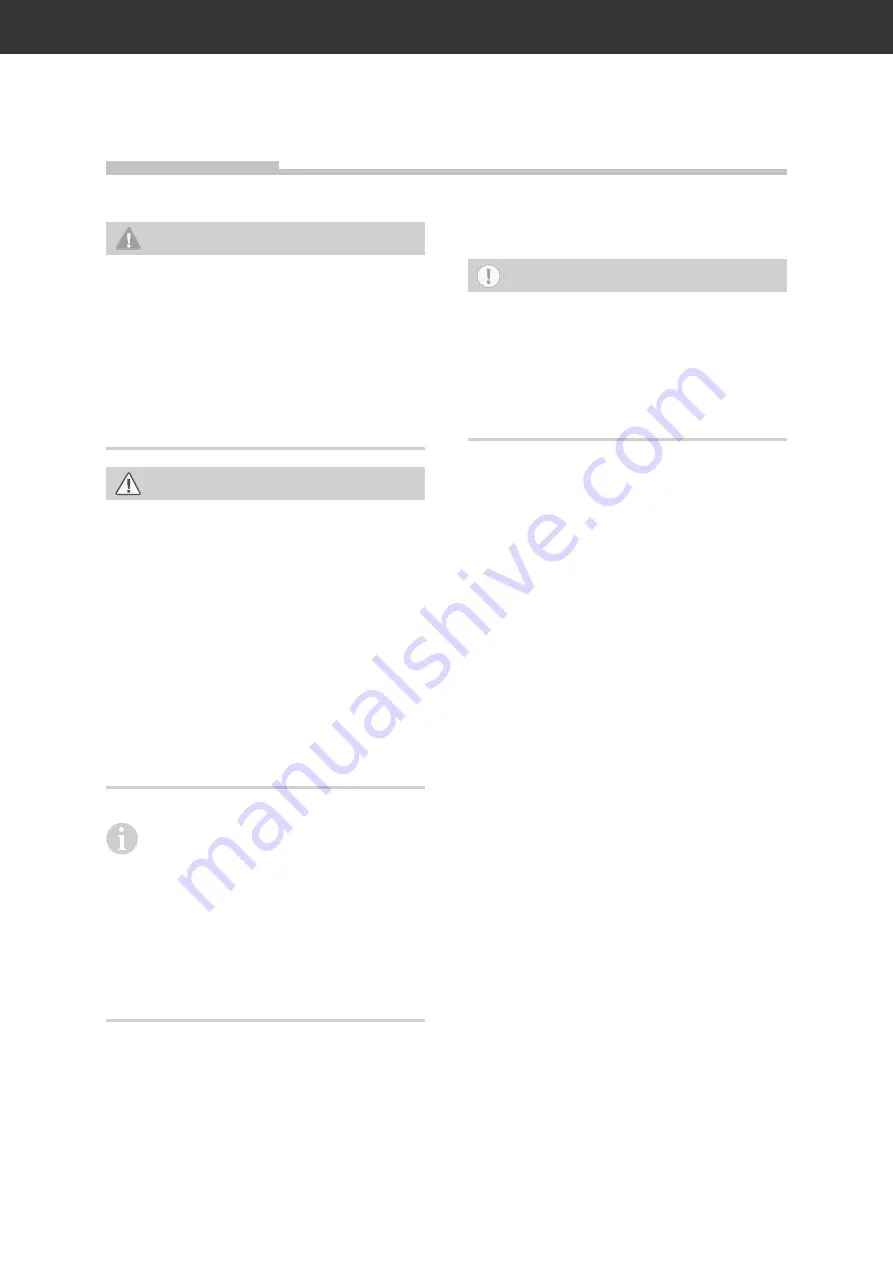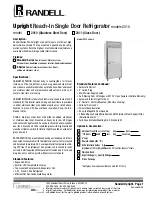
Storing bottles
Page EN-12
WARNING
Danger of explosion!
Improper handling of the appliance
can lead to explosions.
■
Do not store explosive substances or
spray cans with fl ammable propel-
lants inside the appliance, as they
may cause ignitable gas-air mixtures
to explode.
CAUTION
Health hazard!
Inappropriate use of this appliance can
damage your health.
■
Opening the door for long periods can
cause a signifi cant increase of the
temperature in the compartments of
the appliance.
■
If the refrigerating appliance is left
empty for long periods, switch off,
defrost, clean, dry, and leave the door
open to prevent mould developing
within the appliance.
Save energy!
Opening the door for long periods can
cause a significant increase of the tem-
perature in the appliance.
– Do not leave the door open for too long
for no purpose.
– If you do not need the refrigerating appli-
ance for a long time, switch it off, clean
it and leave the door open to prevent
mould from developing.
Maximum storage capacity
NOTICE
Risk of damage!
Damage may be caused to the appli-
ance by placing too much weight on
the storage racks.
■
Do not exceed the maximum load of
26 kg per storage rack.
Filling the appliance
• Remove all packaging before beginning
refrigeration, e.g. protective sheeting,
cardboard, etc.
• Ensure that the bottles are tightly sealed
and then place them on the storage
racks.
• The bottle tops should be facing the glass
door.
• Make sure that the bottles do not directly
touch the interior walls of the appliance or
the glass door.
• Systematically fill the appliance so that
the beverage you want is easy to reach.
The prevents the glass door from being
open for an unnecessarily long time.
• Store strong alcohol only standing upright
and closed tightly.
• Make sure that the device is at least 70%
filled in order to counteract fluctuations in
temperature.
• Please note that the appliance’s interior
temperature is subject to slight fluctua-
tions. In the vicinity of the door, the tem-
perature is slightly higher. Towards the
back of the appliance, the temperature is
the lowest.
• Do not cover the storage racks (5) with
paper or anything similar. The air within
the refrigerator’s interior must be able to
circulate.
Storing bottles
















































